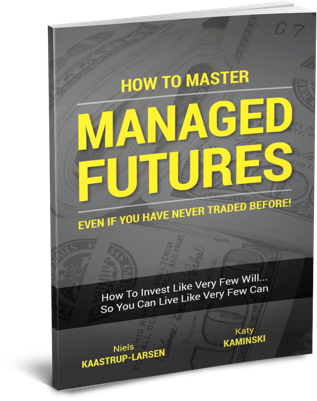Inflation, Tariffs, and the End of Easy Money

- The old market rules built on cheap money and globalization don’t seem to be working anymore.
- Inflation, tariffs, and political pushback are reshaping how markets move and who benefits.
- To keep up, investors need to let go of old habits and start thinking more actively, more deliberately, and a few steps ahead.
For nearly four decades, markets were governed by a simple formula: globalization brings growth, central banks backstop volatility, and falling interest rates lift all boats. It was a period where investors could ride the wave of expanding multiples, surging asset prices, and easy money with relatively little friction. Passive investing worked. Risk was something you hedged around the margins, not a force that threatened the entire structure.
But that world is gone and may not be coming back anytime soon.
We are living through a profound regime change. This new environment is shaped not by tailwinds but by structural headwinds: persistent inflation, populist politics, a reversal of globalization, and rising inequality. In short, the rules of the game have changed. And if investors don’t change with them, they may be in for a long, painful lesson.
From Labor Protests to Populist Tariffs
A labor protest in Chicago in 1886, now remembered as the origin of May Day, helped ignite the global workers’ rights movement. That moment was a turning point, and today, a different but equally powerful shift is underway.
Just as the late 19th century reshaped labor and capital, today’s populist wave is disrupting trade norms, fiscal policy, and economic ideology. Long on the losing side of globalization and automation, the working class is demanding change. That demand is manifesting in tariffs, reshoring efforts, and a rejection of status quo economics.
Some argue these policies are politically messy or economically inefficient. But behind them lies a simple truth: the old playbook no longer works. For forty years, monetary policy favored asset holders. Interest rates were taken from 20% to near zero. Corporations prospered and capital won.
Yet for all its benefits, that system came at a cost. Inequality surged, the middle class weakened and now, after decades of watching the benefits accrue to the top, the majority is demanding a redistribution of power, opportunity, and, yes, risk. The result is a more volatile, less predictable world.
The End of Easy Money and the Rise of Real Risk
Today, investors can no longer count on the Federal Reserve to suppress volatility. Inflation has returned as a secular force, stimulus is no longer a free lunch, and the bond market, once a relative haven, is no longer guaranteed to shield portfolios in downturns.
What does that mean for returns?
We may be entering what Jim Bianco of Bianco Research calls a “4-5-6 world.” Cash yields around 4 percent. Bonds offer about 5. Stocks might return 6, if everything goes well. But don’t expect a smooth ride. Swings could be brief, but they will probably be sharper, and dispersion will be greater. Averages will mask a lot of pain and opportunity underneath.
Passive investing that thrived on rising tides for years may now underperform. In a zero-rate world, you don't need to think much. Just get your sail in the air and let the liquidity do the work. But when markets begin to chop sideways, or worse, the advantages shift toward those who can steer.
That means more value in active management. More relevance for sector selection. More weight placed on valuation, pricing power, and real earnings. The new era rewards nuance.
A Time for Convex Thinking
This is also a time for asymmetric bets. Options and other convex strategies provide a way to manage risk and express a view without putting everything on the line. These tools, once considered niche, are becoming more mainstream.
Investors should also rethink their assumptions about safety. Long-dated bonds, which helped power 60/40 portfolios for decades, may become a source of pain in a rising-rate world. Credit markets, which tend to seize up during slowdowns, carry cyclical fragility. Even the traditional inflation hedge of equities can falter when pricing pressure turns from an asset booster to an earnings drag.
It very well might be a time to be deliberate, resist the temptation of yesterday’s rules, and recognize that there is no longer a one-size-fits-all solution. This doesn’t mean investors should panic. But it does mean they should prepare. Regime shifts are rare, but when they arrive, they tend to last. The last one endured nearly forty years. Who knows, the next could run just as long.
The investors who will thrive are those willing to accept that truth early, adapt their approach, and think several steps ahead. The biggest risk now is assuming things will go back to normal. If history is any indication, they probably won’t.
This is based on an episode of Top Traders Unplugged, a bi-weekly podcast with the most interesting and experienced investors, economists, traders and thought leaders in the world. Sign up for our Newsletter or subscribe on your preferred podcast platform so that you don't miss out on future episodes.
Most Comprehensive Guide to the Best Investment Books of All Time

Most Comprehensive Guide to the Best Investment Books of All Time
Get the most comprehensive guide to over 500 of the BEST investment books, with insights, and learn from some of the wisest and most accomplished investors in the world. A collection of MUST READ books carefully selected for you. Get it now absolutely FREE!
Get Your FREE Guide HERE!




